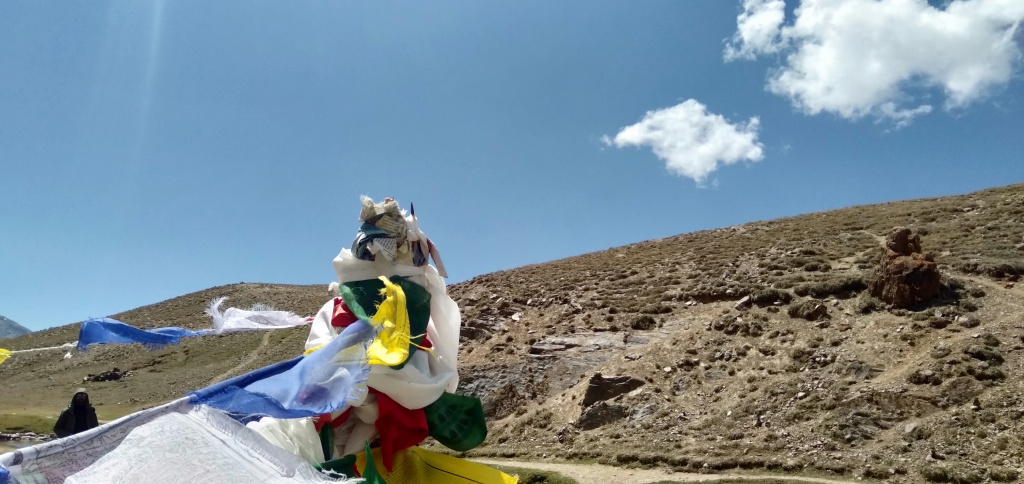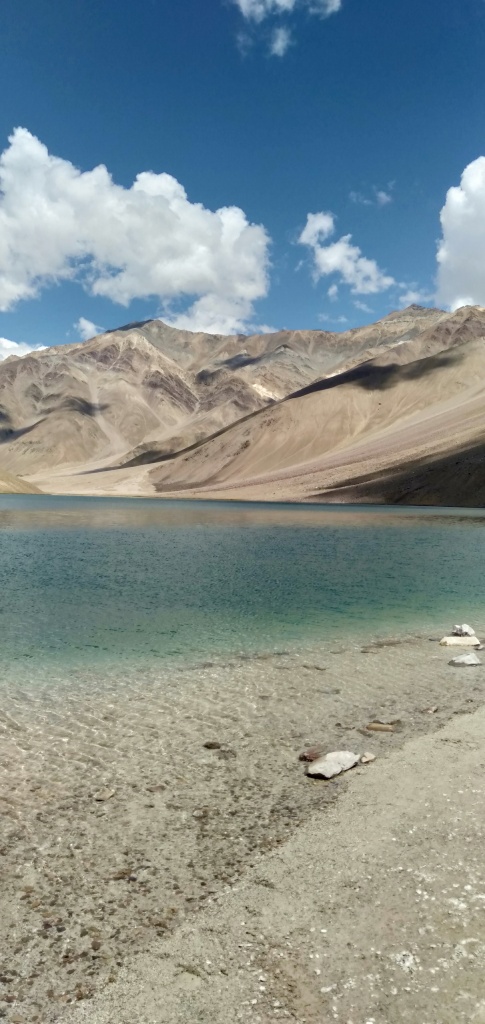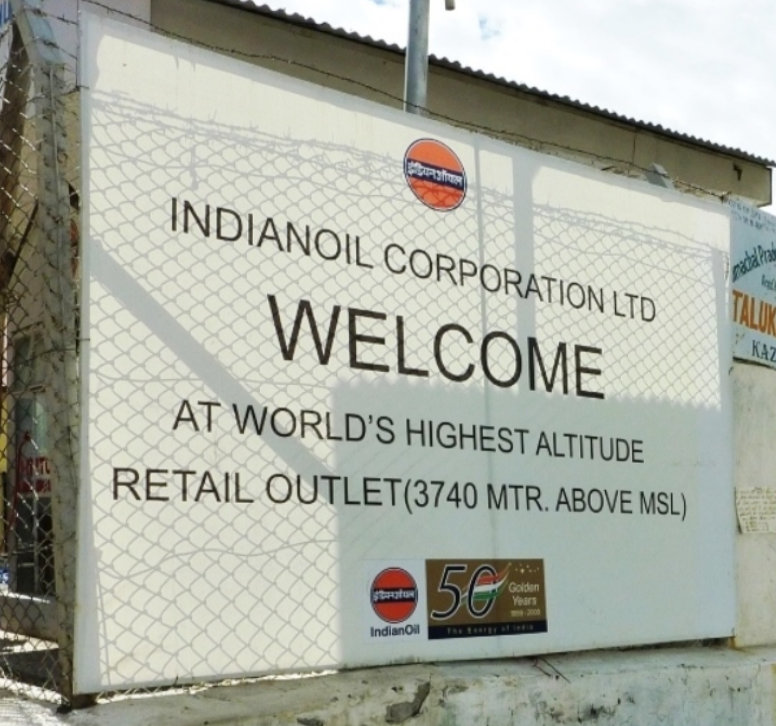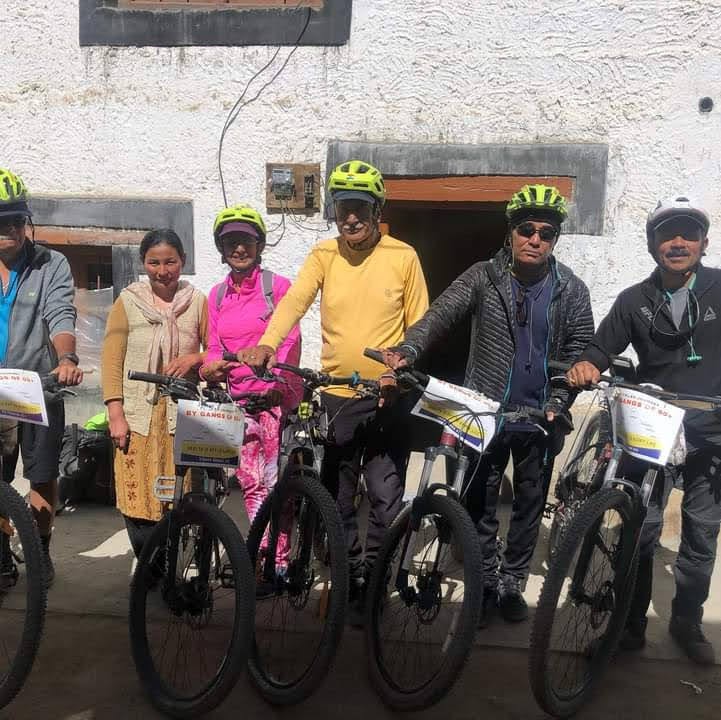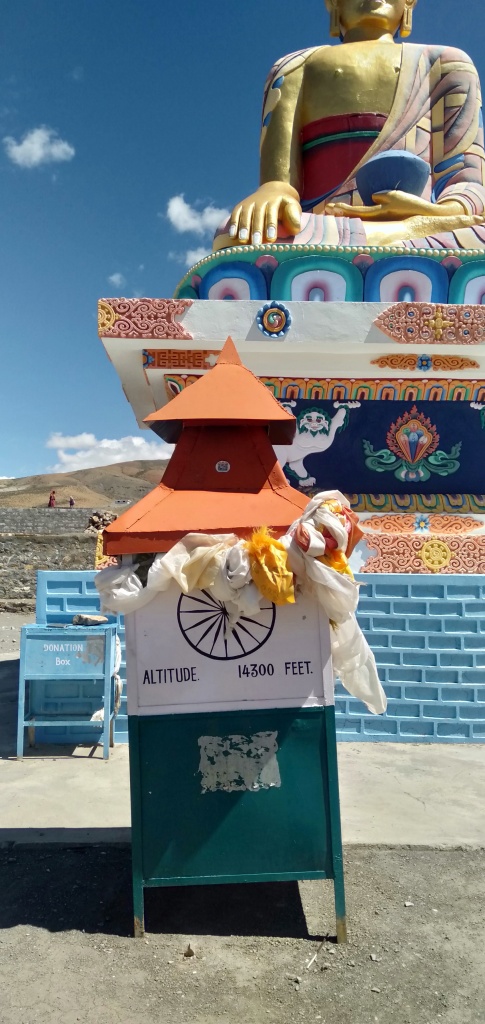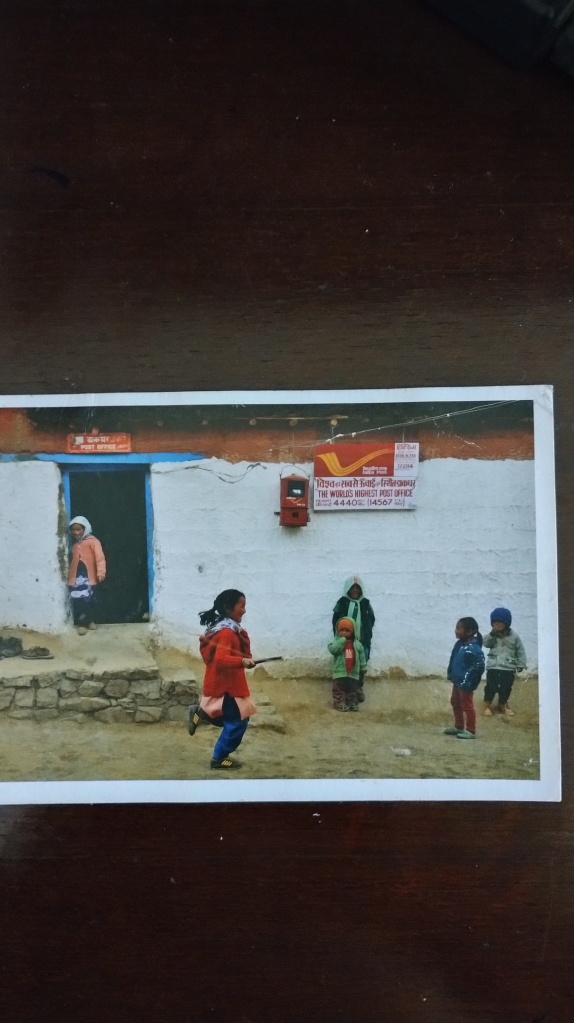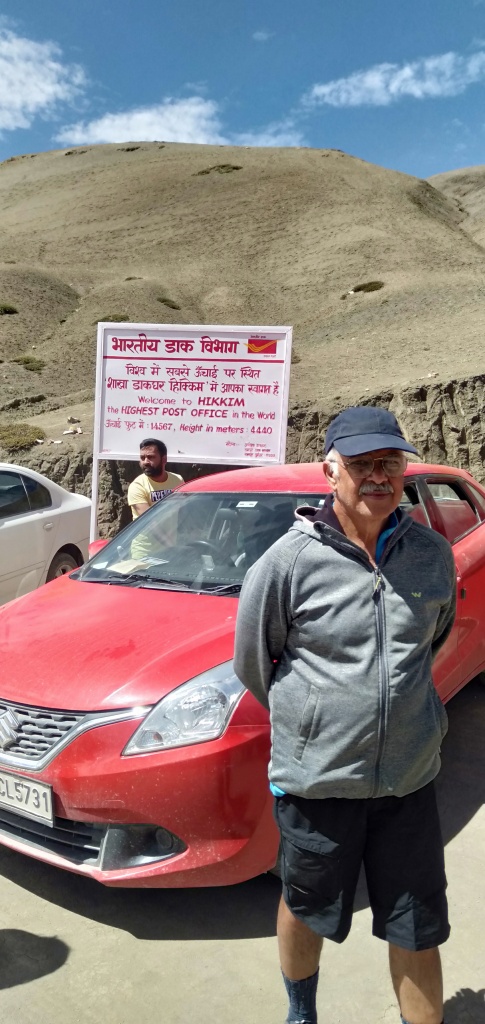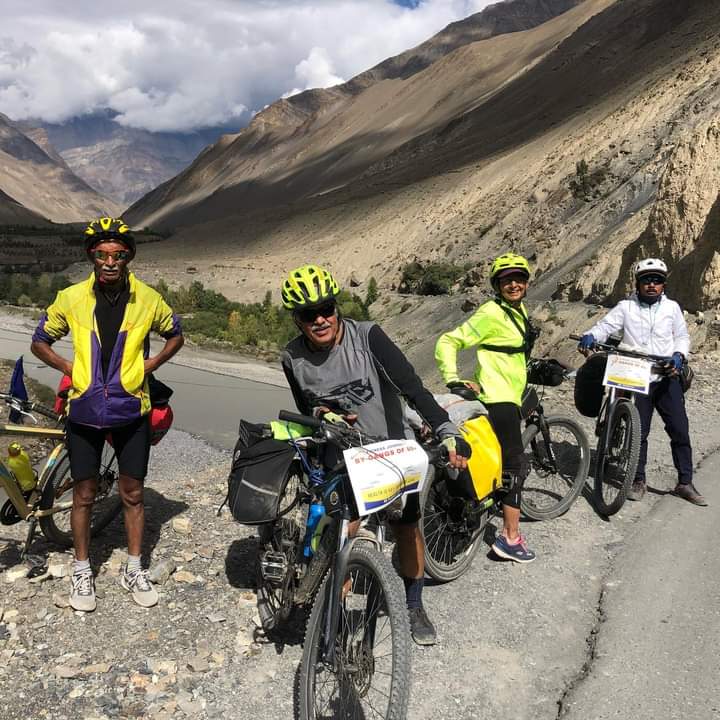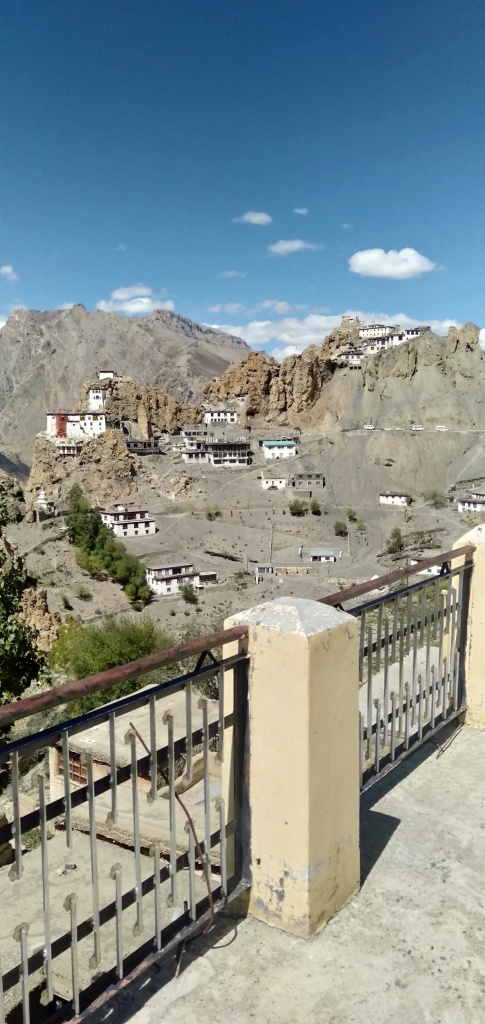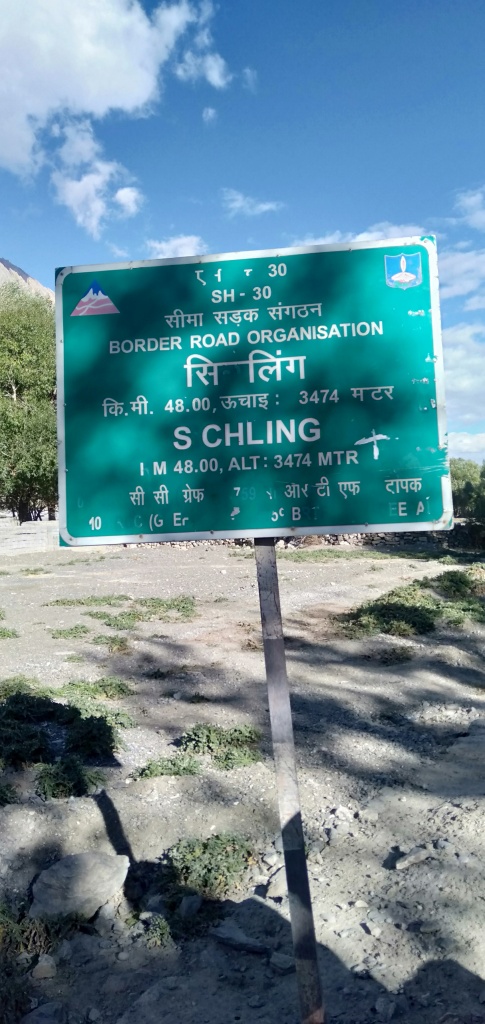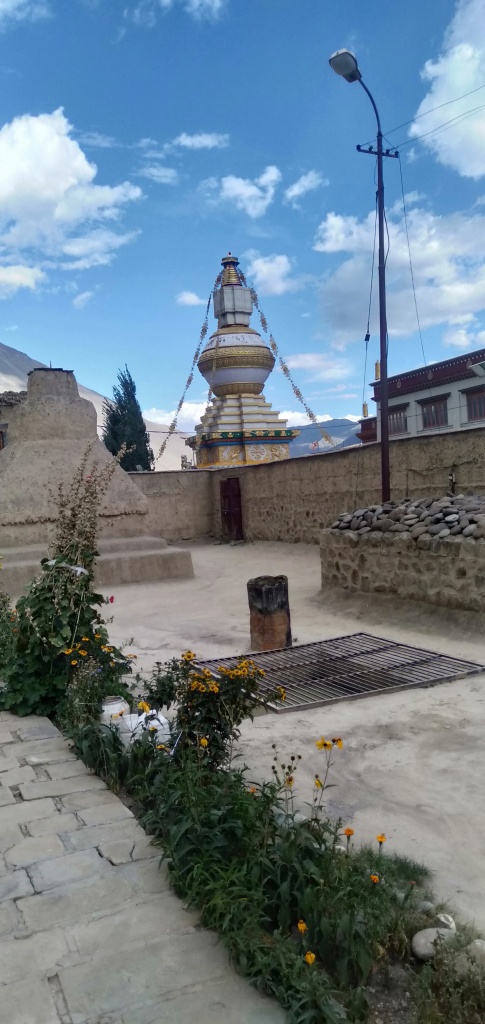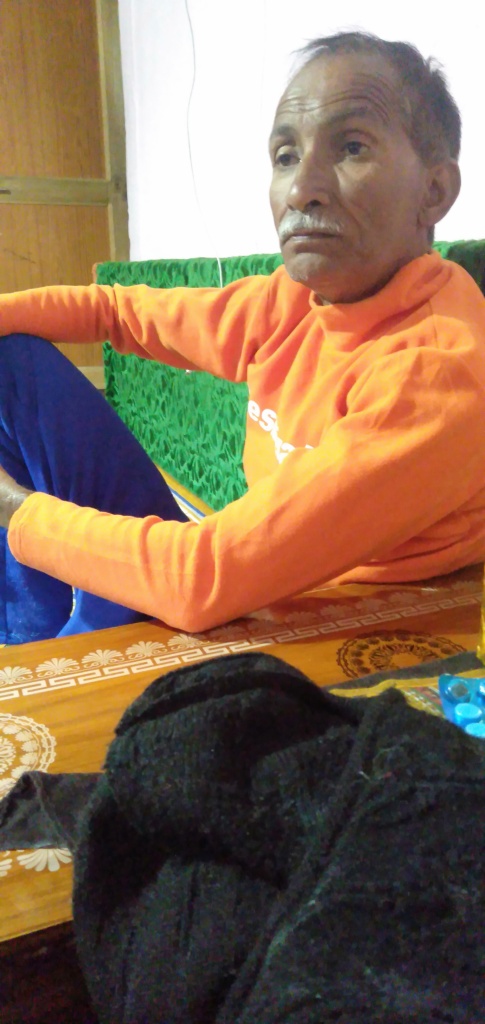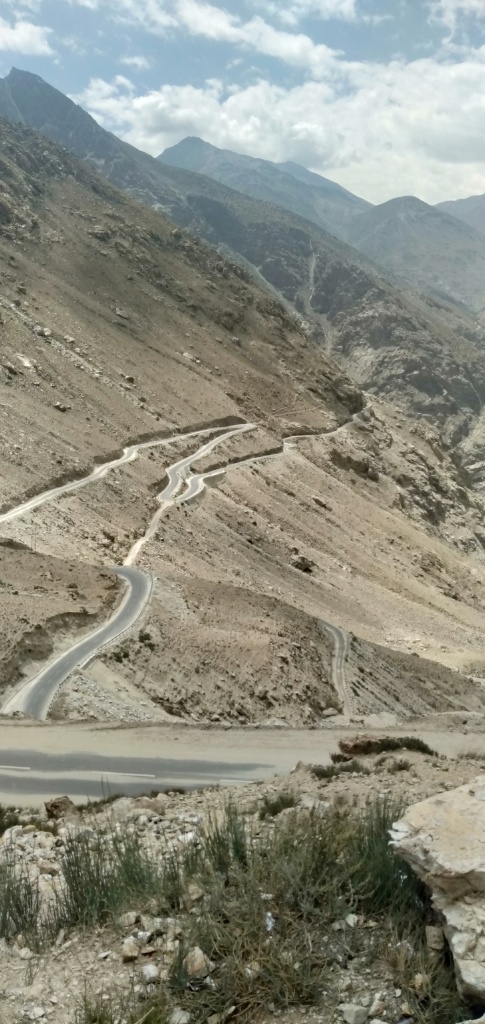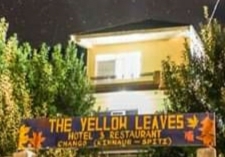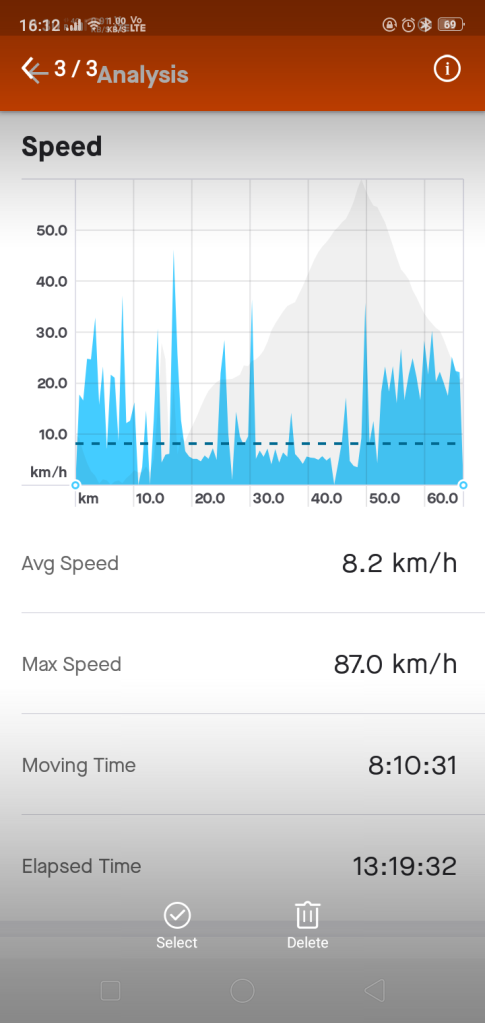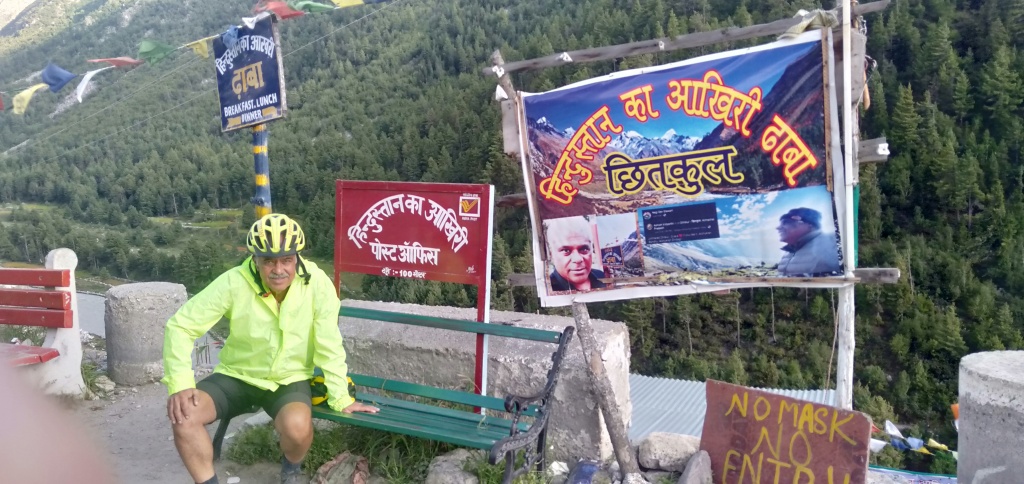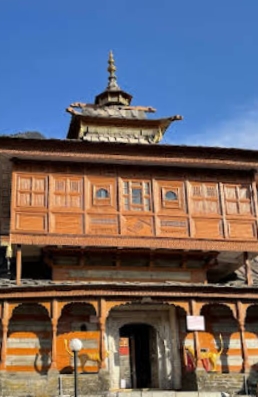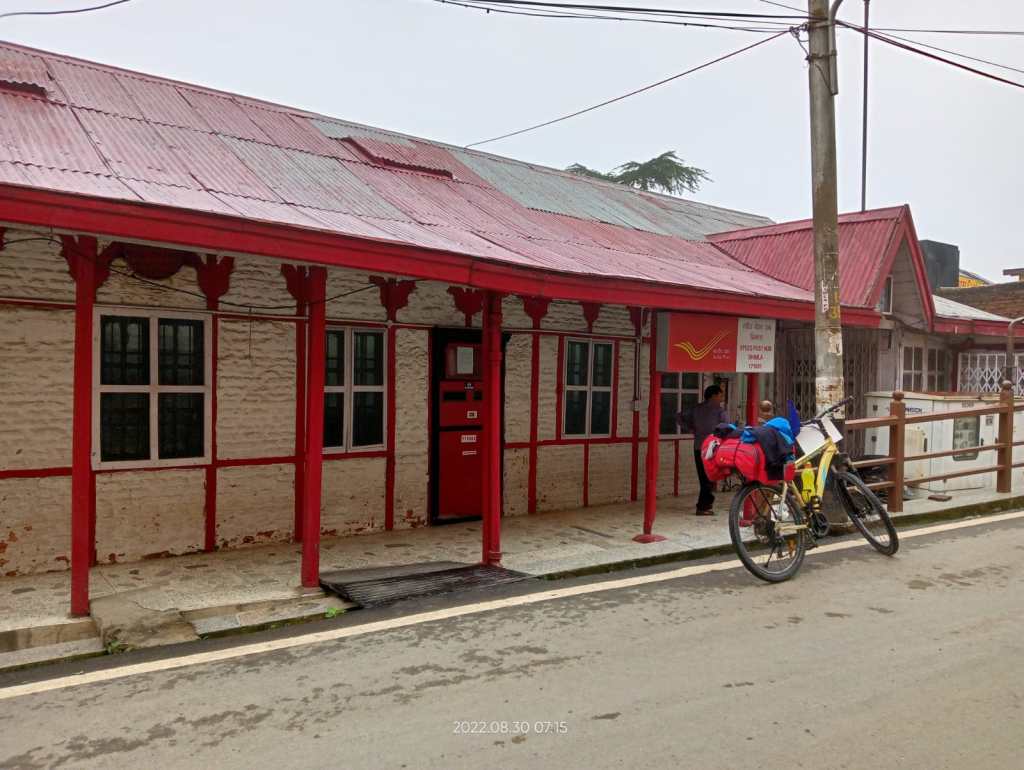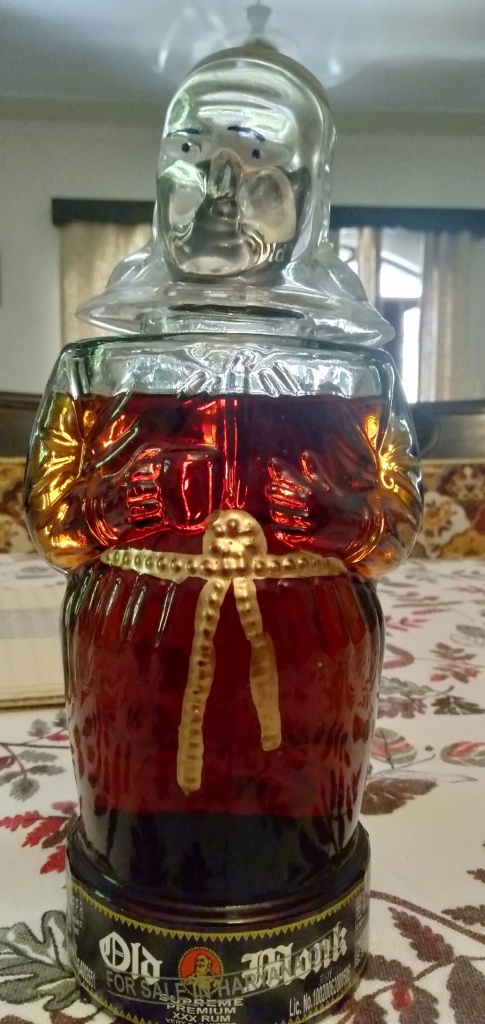Waking up at 4.00 am had become a habit by now. Most of the time I would be waiting for the alarm to go off. Next morning after our customary cup of tea with biscuits we were ready with our bicycles packed up. A customary group photo outside the hotel and we were off. I do not know what happened to all those photographs. At the start of our trip it was decided who so ever took photographs would upload them on the Whats App group and at the end of the journey I found out that lots of photos were missing. The highway was along the Satluj river and we were happily rolling along on national highway 5 There was slight chill in the air but nothing alarming as of now. The landscape had started to change slightly. The trees were less. There was more grass. (This reminded me of another time when my wife and myself were driving to Gangotri) There were places where one could see some form of agriculture. As we passed along the highway I noticed that there were a number of tunnels which were probably made during the various hydroelectric projects. The entrance gates were heavily padlocked.

The sun had started to turn on its heat. The water breaks were more frequent but we pushed ourselves towards Karcham where our lunch was waiting, organized by the courtesy of the Indian Army at one of the transit camps.

Lunch was an elaborate affair. It had been a long time since we had such scrumptious meal. While Col Gurung was chatting with the officer in charge and making arrangements to transport our bicycles and us, I took this opportunity to have a quick power nap. This resulted much to my dismay using a vehicle to go to a place called Chitkul the last village in Kinnaur district which was about thirty five kilometers away from the main highway. This was also part of the ancient Indo-Tibet trade route of ancient times.

What was unknown to me was that Col. Gurung was making arrangements for the vehicle before we reached Karcham
Once the vehicle had arrived we loaded our cycles and six of us proceeded towards Chitkul. The vehicle was Bolero camper double cabin pickup.
We crossed the Baspa river barrage and the road had turned narrow and quite rough and we were climbing roughly to 11,000 ft .The first part of the journey to Sangla was quite an experience. The road was cut into the mountains and was dry and dusty and no side railing barriers. Travelling on pickup was quite a bone jarring journey with lots of potholes. All of us were hanging on to where we could fine a handhold. In the distance we could spot the bridge which had been destroyed during the last monsoons. According to the driver/guide a huge boulder had come rolling down the mountainside and crushed a car and then the bridge was destroyed. Chitkul is also gateway to some Borasu and Lamkhaga pass. At Raksham we stopped for a quick cup of tea and then proceeded towards Chitkul. Here at Raksham there were some small fields and the vegetation was more green with apple orchards I spotted a huge mountain peak with a very smooth rock face. My first thought was if anyone ever attempted to climb this peak. Talking to our driver /guide I was informed that Red bull had organized climb before Covid the lockdown, but at present the Govt does not allow any climbs from this face. By the way our driver/guide was supposed to have undergone advance mountaineering coarse from Manali.

After tea we moved on towards Chitkul. The road now was quite rough, I think I can easily mention that there was no road. It was more like a dirt track with lots of boulders. We crossed a number of streams on the way. Some of these streams had the reputation of sweeping away motorcyclist who were attempting to cross when there was sudden flash flood. This was known as ‘Pagal Nala’. Later on I came to know that all the streams that had no names were known as Pagal Nala which could be translated as mad stream in English .Finally after much rolling around in the pickup we reached Chitkul.
At Chitkul I noticed that most of the houses were made of stone and wood with sloping roof. We saw lots of signboards stating the last post office and last Dhaba and last village.

The last village signboard had lots of stickers pasted by various
Motor bike groups who had visited this place and this was something which I had seen all along the route


Some of the village houses were done up in bright colors with wooden balconies really looked picturesque.
Chitkul has the cleanest air in the country according to survey conducted by IIT Delhi.
Lots of trekkers use this route to go trekking to famous Kinnaur Kailash Yatra to the height of almost 5000 mts plus and is considered to be a hard trek
According to the locals the deity of Chitkul is related to the deity of Gangotri and in the past people would carry this deity to Gangotri on foot crossing many high passes.
Finally after gathering all this information we rolled back to Raksham our stopover for the night. A quick wash and hot dinner we packed up for the night.

